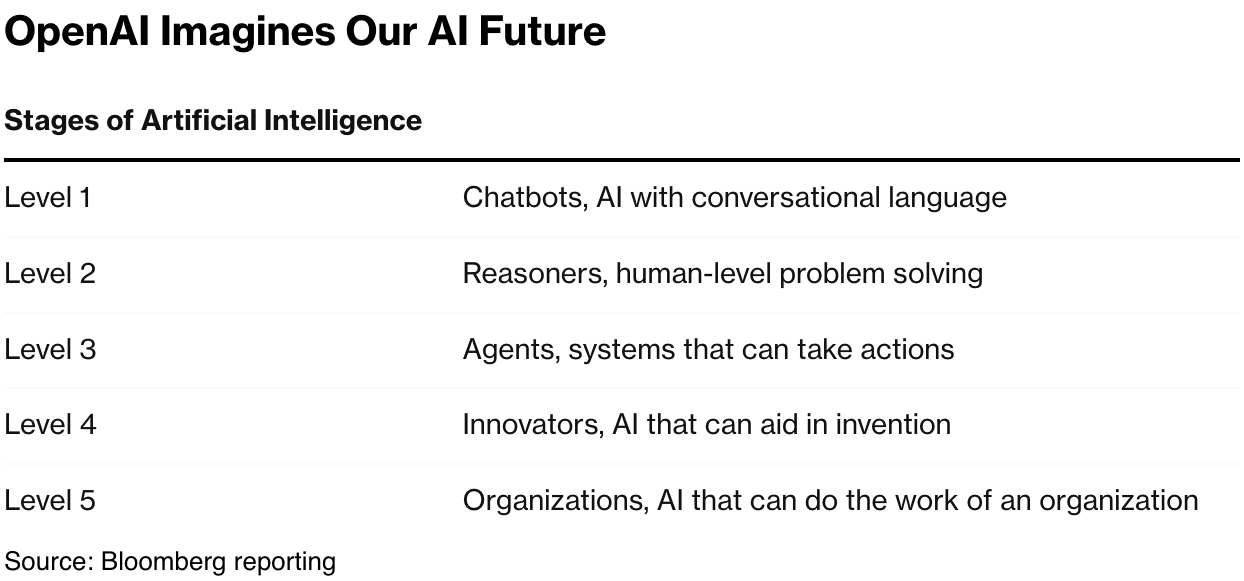
AI: Anthropic's Claude 3.7 first of Gen 3 LLM 'Reasoning' AIs. RTZ #645
OpenAI a few days ago highlighted it’s ‘simplified’ product roadmap, fusing LLM AI chatbot capabilities with advanced reasoning and agentic capabilities in GPT-5, expected later this year. To make it all look like these AI models are ‘thinking’. Before that of course there’s GPT 4.5 in the coming weeks, without the AI reasoning built in.
The former is what could be called ‘Gen 3’ LLM AI models coming next in this AI Tech Wave in 2025. And the race is on for the key peer companies like Google, Anthropic et al to roll out their versions.
Anthropic did that this week with its Claude Sonnet 3.7 and Code, with these blended ‘Gen 3’ LLM AI and reasoning/agentic capabilities. While the company scales up its capital resources with partners Amazon and Google, amongst others.
As Axios summarizes in “Anthropic adds advanced reasoning to latest model”:
“Anthropic said Monday its latest model — Claude 3.7 Sonnet — integrates advanced reasoning capabilities for the first time.”
“Why it matters: While OpenAI and others have released separate models focused on longer reasoning times, Anthropic adds advanced reasoning into standard models.”
“How it works: Anthropic says the new model is capable of near-instant responses or extended responses that show step-by-step reasoning with users able to choose which type of response they’re looking for.”
-
“Anthropic’s API users can control how long Claude spends reasoning before answering. That’s important because longer reasoning time increases the cost of a query.”
-
“Claude 3.7 Sonnet also has enhanced computer use abilities and improved coding skills.”
-
“Anthropic said the new model will be available on all its Claude.ai plans, via its API and through cloud providers Google and Amazon.”
Techcrunch explains the reasoning further in “Anthropic launches a new AI model that ‘thinks’ as long as you want”:
“Anthropic calls Claude 3.7 Sonnet the industry’s first “hybrid AI reasoning model,” because it’s a single model that can give both real-time answers and more considered, “thought-out” answers to questions. Users can choose whether to activate the AI model’s “reasoning” abilities, which prompt Claude 3.7 Sonnet to “think” for a short or long period of time.”
And Anthropic like OpenAI, is also focused on simplifying the user interface (UI/UX) for mainstream users:
“The model represents Anthropic’s broader effort to simplify the user experience around its AI products. Most AI chatbots today have a daunting model picker that forces users to choose from several different options that vary in cost and capability. Labs like Anthropic would rather you not have to think about it — ideally, one model does all the work.”
And the pricing options:
“Claude 3.7 Sonnet is rolling out to all users and developers on Monday, Anthropic said, but only people who pay for Anthropic’s premium Claude chatbot plans will get access to the model’s reasoning features. Free Claude users will get the standard, non-reasoning version of Claude 3.7 Sonnet, which Anthropic claims outperforms its previous frontier AI model, Claude 3.5 Sonnet. (Yes, the company skipped a number.)”
“Claude 3.7 Sonnet costs $3 per million input tokens (meaning you could enter roughly 750,000 words, more words than the entire “Lord of the Rings” series, into Claude for $3) and $15 per million output tokens. That makes it more expensive than OpenAI’s o3-mini ($1.10 per 1 million input tokens/$4.40 per 1 million output tokens) and DeepSeek’s R1 (55 cents per 1 million input tokens/$2.19 per 1 million output tokens), but keep in mind that o3-mini and R1 are strictly reasoning models — not hybrids like Claude 3.7 Sonnet.”
All this is to underline that the race for the next generation of AI models on the roadmap to AGI is underway in this AI Tech Wave.
And it’s barely March. Stay tuned.
(NOTE: The discussions here are for information purposes only, and not meant as investment advice at any time. Thanks for joining us here)








